
 |
| —*ADVERTISEMENT— |
 |
| CODE UPDATE | |
| Significant Code Changes to the 2012 International Residential Code | |
| (The information below is excerpted from the Significant Changes to the 2012 International Codes series.) | |
| A roof drip edge is now required for asphalt shingles. Drip edge was not previously required for the installation of asphalt shingles unless it was part of the roofing manufacturer's installation instructions, which must be followed for installation of all roofing materials in accordance with Section R905.1. Click to continue reading more on this update to the 2012 IRC Significant Changes. |
|
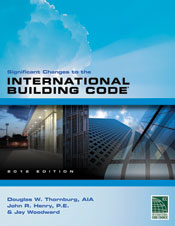  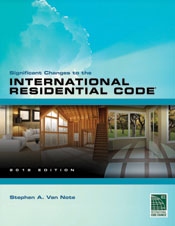  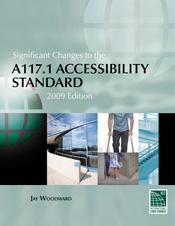 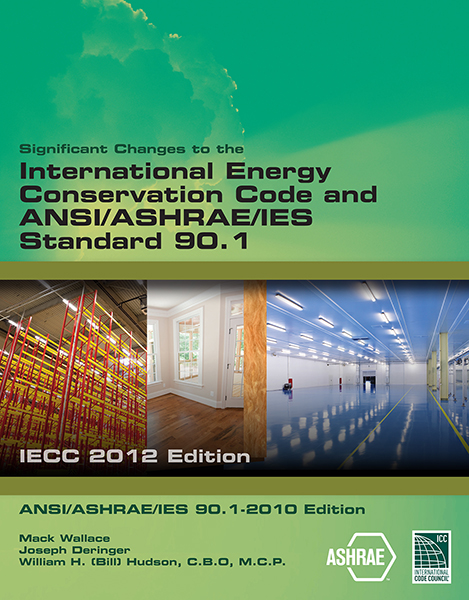 |
The Significant Changes to the 2012 International Codes series is designed to assist code officials, architects, engineers and other construction professionals transitioning from the 2009 to the 2012 editions of the International Codes. Authored by ICC code experts, the series offers a comprehensive yet practical analysis of hundreds of the most critical changes. Each color publication contains: revised code text; a summary of each change listed; in-depth change analysis; and a detailed photo, illustration or table for each change to deepen understanding. Coverage reflects provisions with special significance, including new and innovative design ideas and technologies, modern materials and methods of construction, and current approaches to safety and stability. |
| Back to top | |
| —*ADVERTISEMENT— |
 |
| CODE BASICS |
| Fire, Based on the 2009 International Fire Code |
| (The information below is excerpted from the 2009 Building Code Basics series.) |
| Combustible materials are natural or synthetic materials that can be ignited and support combustion. Combustible materials in the context of the IFC Chapter 3 are not combustible metals or flammable solids—these are hazardous materials that are regulated by other provisions in the fire code.
Click to continue reading more on this excerpt from the Building Code Basics: Fire, Based on the 2009 IFC. |
| Back to top |
| —*ADVERTISEMENT— |
 |
| CODE Q&A | |
| 2009 International Residential Code — Building and Energy Provisions | |
| (The information below is excerpted from the 2009 International Codes Q&A series.) | |
| Questions regarding minimum ceiling height are raised and discussed: Q: When finishing off a basement into living space, such as a recreation room or sleeping room, what is the required minimum clearance under HVAC ducts? Click to get an answer to this code question and others by reading more on this excerpt from the 2009 IRC Building and Energy Q&A. |
|
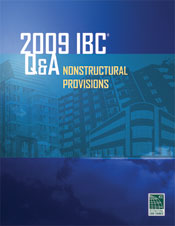 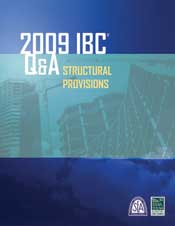 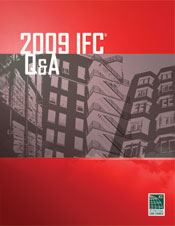 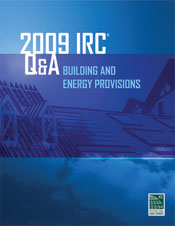 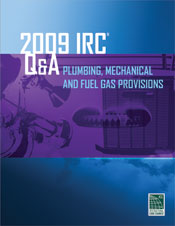 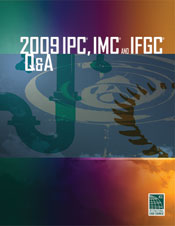 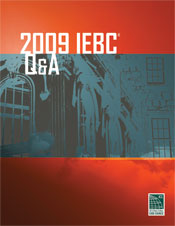 |
The 2009 Q&A series will assist engineers, architects, inspectors, fire and building officials, and plans examiners with finding answers to common code questions that arise during design, plan review, construction and daily code enforcement. Features: many new questions and answers; detailed photos, tables and illustrations that provide a clear understanding of both the intent and meaning of the code text; the relevant code section printed before the question and answer for easy reference; and discussion on a wide variety of topics. |
| Back to top |
 |